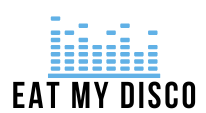In a world where bills seem to multiply faster than rabbits, the pay-yourself-first method emerges as a financial superhero. Imagine treating your savings like that one friend who always insists on splitting the bill—only this time, you’re the one getting the biggest slice of the pie. By prioritizing your savings before anything else, you’re not just putting money aside; you’re investing in your future happiness.
This method isn’t just a clever catchphrase; it’s a game-changer for anyone tired of living paycheck to paycheck. It’s about flipping the script on traditional budgeting and making your financial goals the main event. So grab your cape, because it’s time to take control of your finances and watch your savings grow like a well-watered plant.
Table of Contents
ToggleOverview of the Pay-Yourself-First Method
The pay-yourself-first method focuses on prioritizing savings before addressing any other expenses. This strategy encourages individuals to allocate a specific percentage of their income directly to savings as the first financial action. Research shows that implementing this method increases savings consistency and builds long-term wealth.
Allocating funds regularly creates a robust financial foundation. Whether an individual saves 10%, 15%, or more of their income, the key lies in treating savings as a mandatory expense. Investing in personal savings builds a safety net for emergencies and future goals.
Adopting this approach shifts the mindset towards financial security. Many individuals find that when they prioritize savings, they reduce unnecessary spending in other areas. Such a mindset can lead to a more sustainable and mindful financial lifestyle.
Tracking savings frequency enhances budgeting effectiveness. Regular contributions foster a discipline that pays off over time. Individuals may also benefit from automating savings transfers to eliminate temptation and ensure consistency.
This method aligns with financial independence goals. Long-term financial growth often arises from small, consistent savings contributions. By treating personal savings as a non-negotiable aspect of budgeting, an individual strengthens their overall financial health.
Benefits of the Pay-Yourself-First Method
The pay-yourself-first method offers several benefits that improve overall financial health.
Financial Security
Establishing savings as a first priority enhances financial security. Individuals who adopt this method often create a financial cushion for emergencies. This safety net helps mitigate risks associated with unexpected expenses. Wealth accumulation becomes more consistent as savings grow over time. The practice instills a disciplined approach to spending, enabling better financial decision-making. As a result, those who save first experience greater confidence in managing personal finances.
Increased Savings
Regularly allocating a portion of income to savings fosters increased savings over time. Many people find committing 10% or more of their earnings significantly boosts their savings rate. When savings occur before discretionary spending, individuals avoid the temptation to spend what remains at the end of the month. Tracking contributions reinforces progress and motivates continued participation in this effective strategy. Consistently saving fosters a healthy long-term perspective about finances, ultimately leading to wealth generation.
Reduced Financial Stress
Focusing on savings first can greatly reduce financial stress. Individuals with adequate savings feel more at ease about their financial situation. Less anxiety arises from worrying about unexpected expenses or emergencies. This method encourages proactive financial management, instilling a sense of control and stability. Those who apply this habit often notice improved mental well-being as they navigate their financial landscape. Ultimately, reduced financial strain contributes to a more balanced and peaceful life.
How to Implement the Pay-Yourself-First Method
Implementing the pay-yourself-first method involves specific steps that enable individuals to prioritize their savings effectively.
Setting Savings Goals
Establishing clear savings goals serves as the foundation of this method. Individuals benefit from defining both short-term and long-term targets. Short-term goals might include an emergency fund or a vacation, while long-term goals could involve retirement or home ownership. They can identify specific amounts associated with each goal. For instance, aiming to save $5,000 for a vacation within two years provides a concrete target. Regularly revisiting these goals ensures ongoing motivation and allows for adjustments as financial situations change.
Creating a Budget
Creating a budget is essential for successful implementation. Start by determining monthly income and fixed expenses, such as rent or utilities. Allocating a set percentage, typically 10% to 20%, to savings first ensures that saving remains a priority. Individuals should distinguish between essential and non-essential expenses to identify potential areas for cutbacks. Tracking spending habits provides insight into where adjustments can occur. Utilizing budgeting apps or spreadsheets can enhance visibility and accountability, making sticking to the plan more manageable.
Common Challenges and Solutions
Implementing the pay-yourself-first method can present challenges. Addressing these obstacles effectively helps individuals maximize their financial potential.
Overcoming Mental Barriers
Mental barriers often hinder the adoption of the pay-yourself-first method. Doubts about financial feasibility frequently cause hesitation. Developing a positive mindset makes a significant difference. Individuals can start by recognizing the value of prioritizing savings over discretionary spending. Focusing on specific, realistic savings goals boosts confidence and motivation. Engaging with financial education resources enhances knowledge and reduces fear of the unknown. Creating a visual reminder of financial goals can help reinforce commitment. Regularly celebrating small milestones also cultivates a sense of achievement. Mental adjustments play a crucial role in transforming financial habits.
Adapting to Lifestyle Changes
Lifestyle changes can complicate the pay-yourself-first approach. Sudden financial obligations or shifts in income require adjustments to the savings plan. Prioritizing savings amidst life’s uncertainties becomes essential. Assessing monthly budgets can reveal adaptation opportunities. Identifying areas for reduced spending, like subscription services or dining out, provides flexibility. Communicating with family members about financial goals ensures support in maintaining priorities. Exploring new income sources, such as side jobs or freelance work, also enhances savings capacity. Regularly revisiting and adjusting savings strategies ensures continued alignment with evolving financial circumstances. Adaptation fosters resilience in pursuing financial independence.
Embracing the pay-yourself-first method can transform financial habits and foster a sense of control over one’s finances. By prioritizing savings before other expenses individuals set the stage for long-term wealth and financial security. This proactive approach not only reduces stress but also cultivates a disciplined mindset that encourages smarter spending choices.
As individuals implement this strategy they find that even small, consistent contributions to savings can lead to significant financial improvements over time. The journey toward financial independence becomes clearer and more attainable. Adopting this method is a step toward building a brighter financial future and achieving peace of mind.




